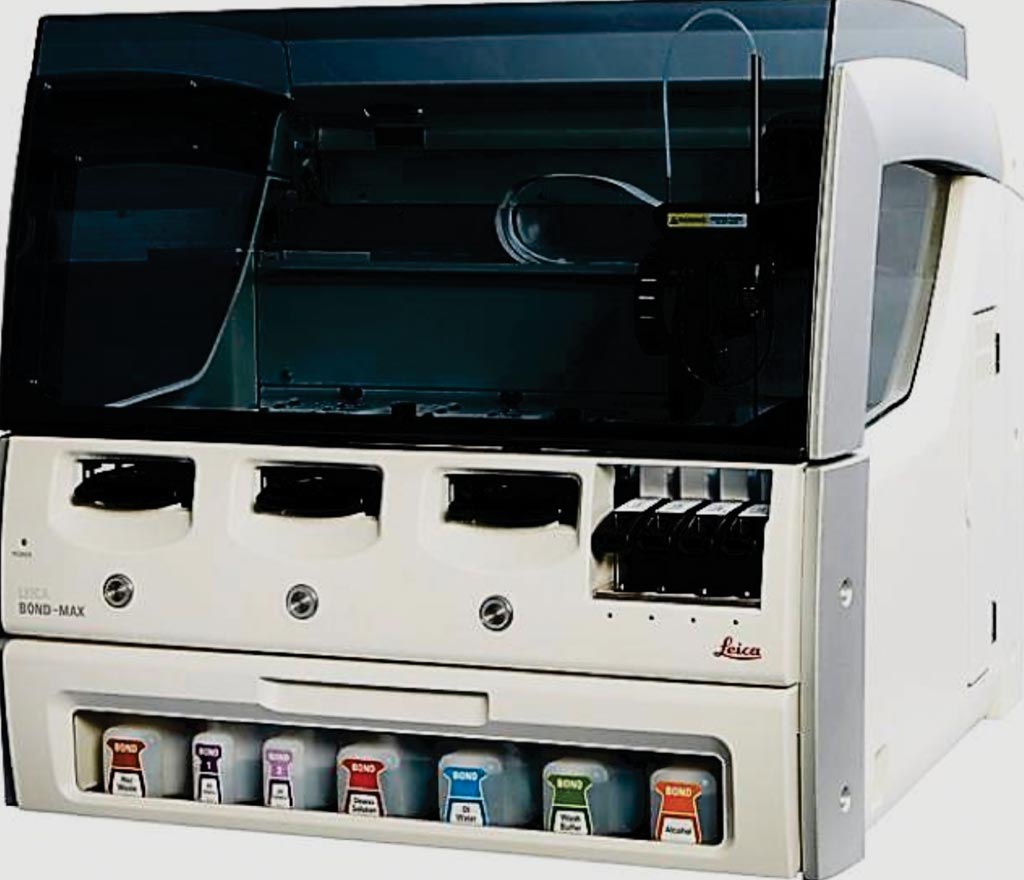Prognostic Biomarker Found for Endometrial Cancer
By LabMedica International staff writers
Posted on 08 Jan 2018
Endometrial cancer (EC) is a major health concern due to its rising incidence. Whilst early stage disease is generally cured by surgery, advanced EC has a poor prognosis with limited treatment options, and altered energy metabolism is a hallmark of malignancy.Posted on 08 Jan 2018
Endometrial cancer usually presents at an early stage following the onset of postmenopausal bleeding and is generally cured by hysterectomy and bilateral salpingo-oophorectomy. However, surgery can be dangerous for obese and elderly women, with significant risk of anesthetic and surgical complications.

Image: The BOND-MAX fully automated immunohistochemical (IHC) and in situ hybridization (ISH) stainer (Photo courtesy of Leica Biosystems).
Medical scientists at the University of Manchester (UK) obtained tumor tissues from 90 sequential EC patients who underwent hysterectomy between 2011 and 2013. The median age of the cohort was 67 years and there were 47 endometrioid (EEC) and 43 non-endometrioid (Non-EEC) tumors. The non-EEC group comprised tumors of 11 carcinosarcoma, nine clear-cell, six serous, 16 mixed and one undifferentiated histology.
Paraffin-embedded tumor specimens were retrieved from the pathology archives and cut into 4-μm serial sections for immunohistochemical (IHC) analysis. All IHC was performed using a fully automated IHC platform Leica BOND-MAX together with Bond Polymer Refine Detection kit and on-board retrieval system. The detection kit is based on a biotin-free, polymeric horseradish peroxidase (HRP)-linker antibody conjugate system for the detection of tissue-bound mouse and rabbit immunoglobulin G (IgG) and some mouse IgM primary antibodies. The team evaluated the expression of the lactate/proton monocarboxylate transporters MCT1 and MCT4 and their chaperone CD147 in EC.
The investigators reported that MCT1 and MCT4 expression was observed in the cytoplasm, the plasma membrane or both locations. CD147 was detected in the plasma membrane and was significantly associated with MCT1 but not with MCT4 expression. High MCT1 expression was associated with reduced overall survival and remained statistically significant after adjustment for survival covariates. There were no significant associations between the clinico-pathological characteristics of the tumors and expression levels of either MCT1 or MCT4.
The authors concluded that their results demonstrate MCT1 to be an important marker for overall survival in EC. The differential staining patterns for MCT1 in low grade EEC and non-EEC tumors indicate metabolic differences between the tumor types. The study was published on December 28, 2017, in the journal BMC Clinical Pathology.
Related Links:
University of Manchester










 (3) (1).png)



